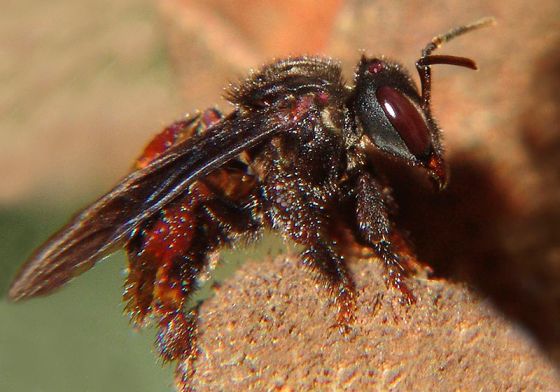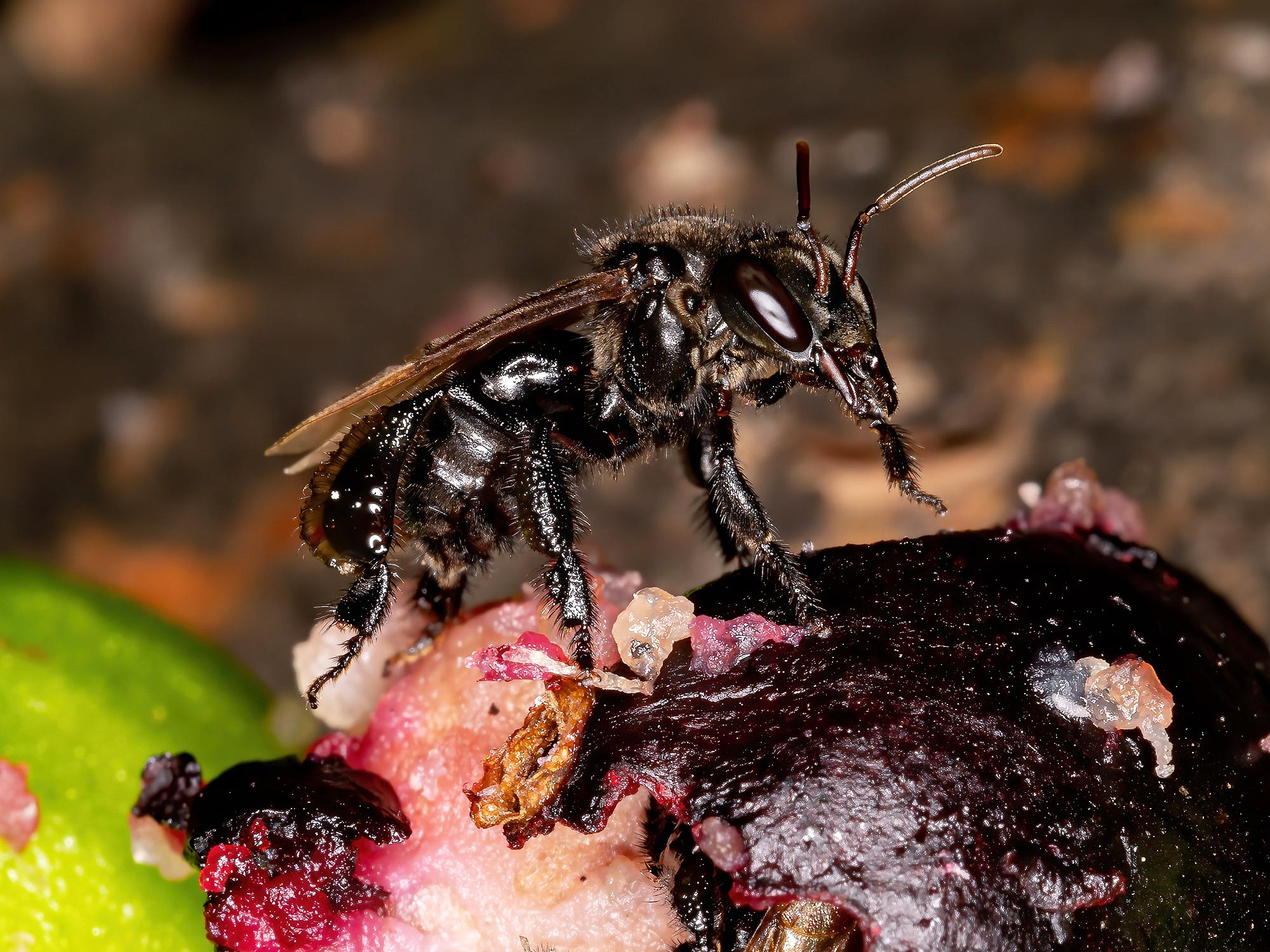A species of stingless bee from Costa Rica has evolved an extra tooth that can bite into flesh and its gut has more in common with a vulture than other bees, according to a new paper by scientists from the University of California, Riverside (UCR).
Bees don’t usually eat meat, but scientists suspect these ‘vulture bees,’ which come from the Trigona family, did so in response to intense competition for nectar.
There are approximately 550 species of stingless bees worldwide and while they don’t sting they have other defense mechanisms, like powerful bites or blister-causing secretions. Typically, stingless bees have ‘baskets’ on their hind legs that they use to collect pollen.
But when UCR researchers went to Costa Rica and set up raw chicken, or carrion, bait to observe the bees, they found the vulture bees were using those baskets to collect the meat.

In response to the bee-meat post, here is meat honey in the hive of the Vulture Bee, a bee that does eat meat.

“This [meat-eating] behavior was only discovered in 1982, nearly two centuries after the bees were first classified.”

“Vulture bees, much like maggots, usually enter the carcass through the eyes.

They will then root around inside gathering the meat suitable for their needs. The vulture bee salivates on the rotting flesh and then consumes it, storing the flesh in its crop.

When it returns to the hive, this meat is regurgitated and processed by a worker bee, which then re-secretes the resulting proteins as a decay-resistant edible glucose product resembling honey.”

Despite their diet, scientists say the honey from vulture bees remains edible and sweet, because the bees store meat in special chambers that are sealed off for two weeks before they access it, and those chambers are separate from where they store honey, Jessica Maccaro, a UCR entomology doctoral student, said in a statement.